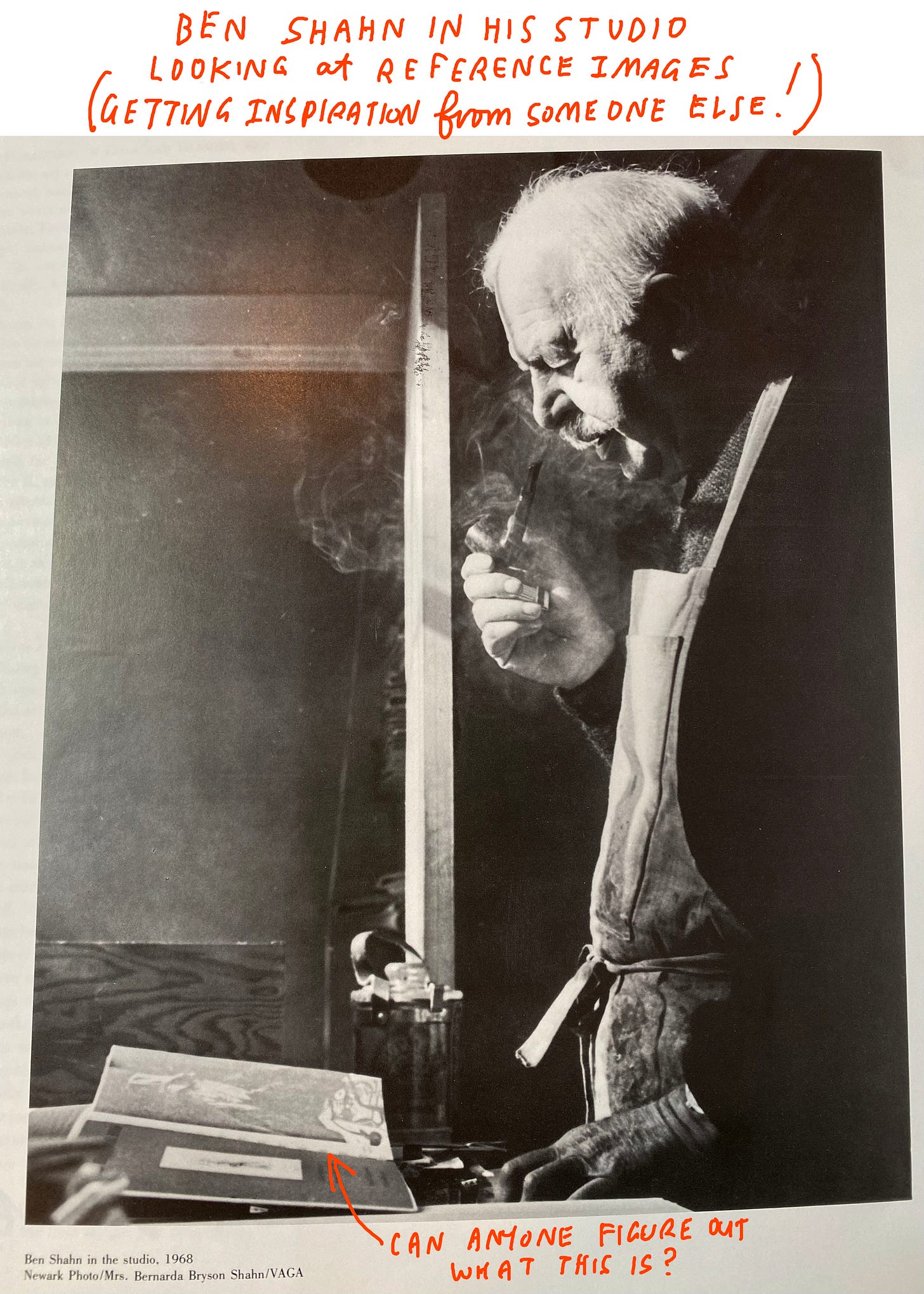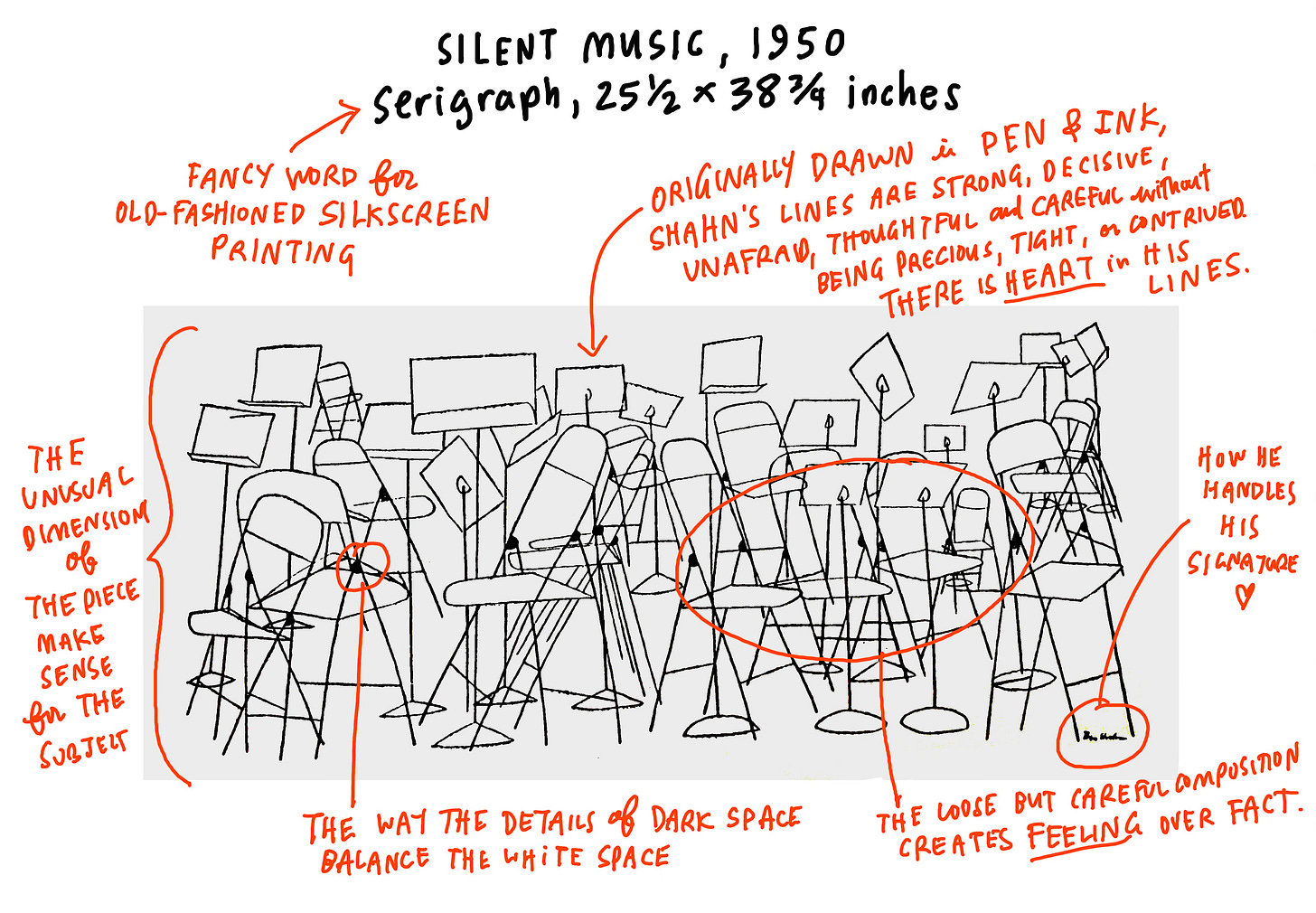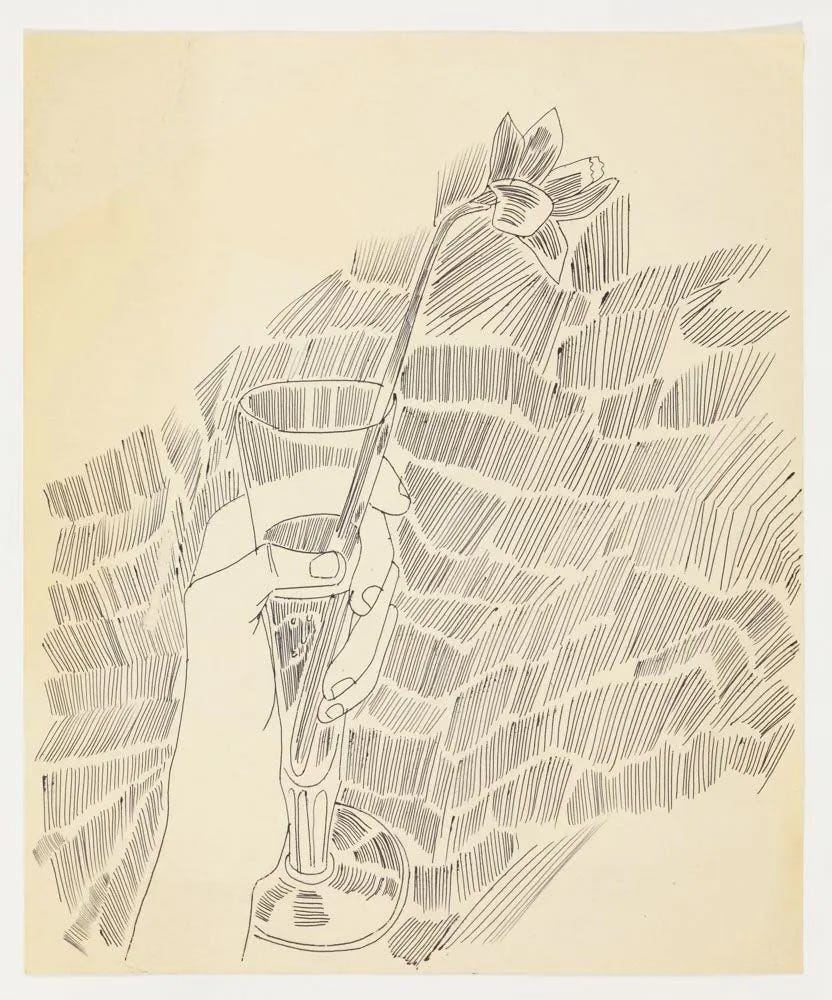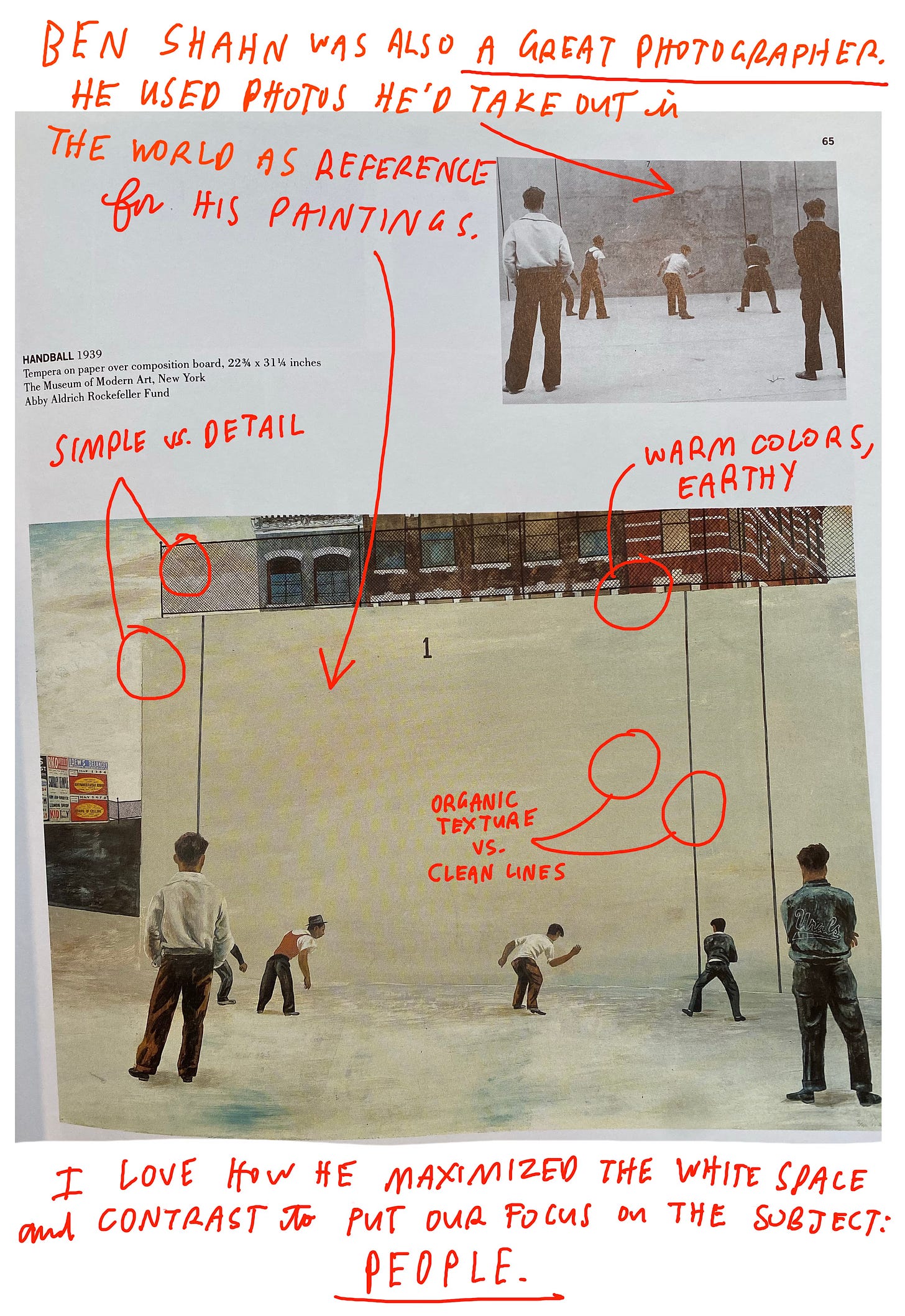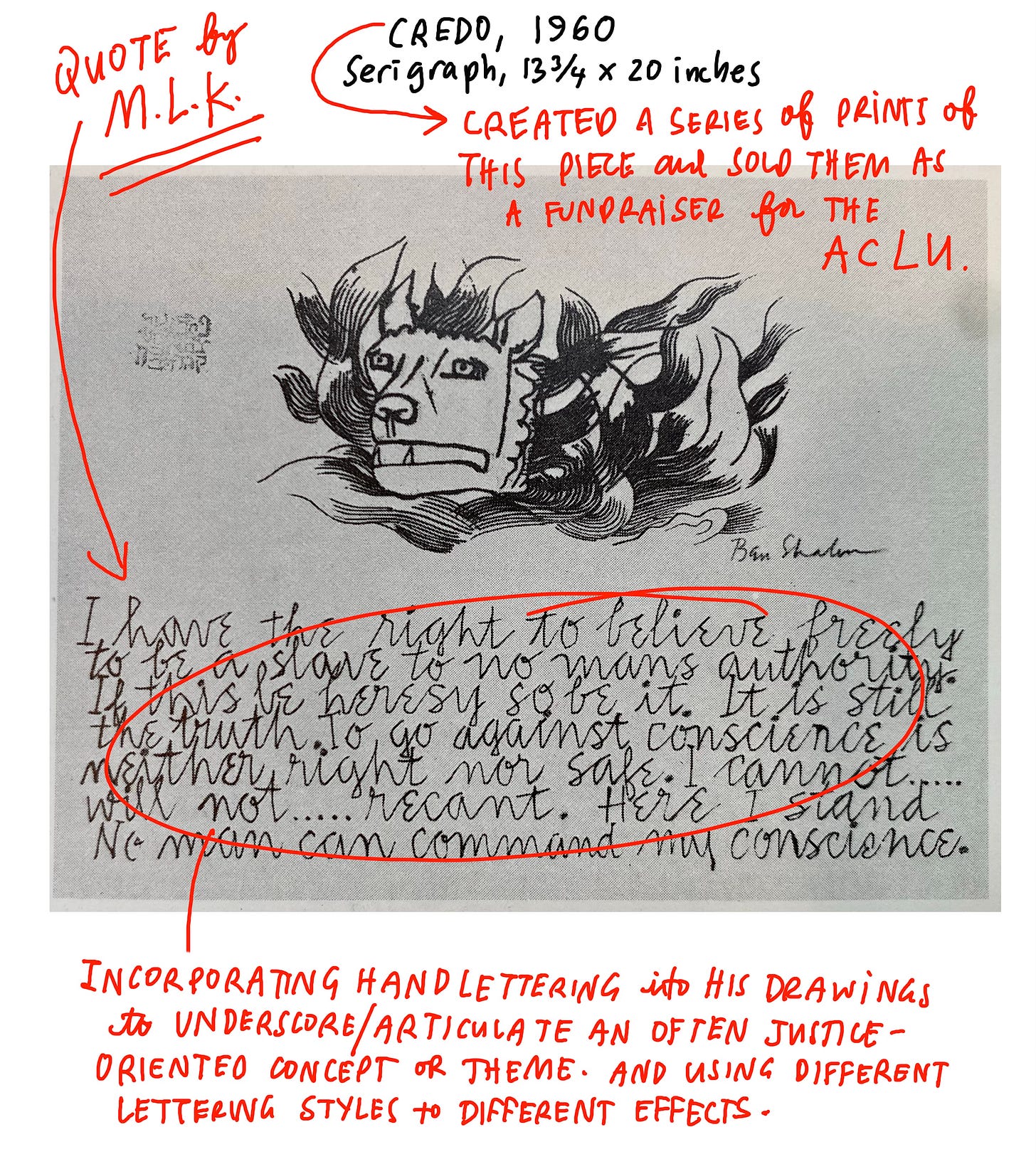Finding Our Artistic Voice
How do we find our unique style? Step 1: We look at our heroes.
Hey Grown-Ups Table Friends,
I hope you are settling into the holiday season. This week we’re doing something a little different. I’m extra excited about it. This is part one of a three week mini-journey we’ll take through the rest of 2023. If I’m right, this little adventure will help set us off on the right foot for a creative, grounded year ahead. Sound good?
Also, I’ve included more of your fabulous emotional fruit drawings from last week’s assignment at the end of this dispatch. Be sure to check out more of them in the chat thread. Love you and all your fabulous fruit feels.
Finding our Artistic Voice, Part 1
The other day, GUT member Beth asked an important question in the comments:
“A friend and former colleague just texted me about wanting to dive back into illustrating and painting...She is looking to find her voice--feels she doesn’t know what that is. I told her what an incredible community this GUT world is -- so she is coming on board! Yay! Made me think about being an artist and exploring one’s particular perspective. Which is what making art is all about, and something that you champion. Not that you need prompts or that you haven’t already directed this (“you do you” I have in my head on repeat), but maybe a specific non-stressful way to get at our unique voice?”
THANK YOU FOR ASKING THIS IMPORTANT QUESTION, BETH AND BETH’S FRIEND.
I can’t tell you how many times people have asked me this and how many years I asked the same questions myself.
When we are new at something - drawing, writing, anything creative, honestly - finding our own style feels like a big dark black hole of mystery. We can all relate. So, while I certainly don’t have all the answers, I know a few things that worked for me and others. It’s also such a fun question to consider, as it inevitably leads us to explore what makes us US.
For the next few weeks, we are going to focus on finding our drawing style; which is to say, our own unique artistic voice. And while it might take years (a lifetime!) to fully develop1, with a few weeks of focus, maybe we can step into 2024 on some solid personal ground. We can continue to walk on our own creative paths, together.
Sound good?
Good.
First things first. Today, we are focusing on our influences.
Who Inspires Us? Who Influences Our Art?
As any good historian or psychoanalyst will tell you, before we understand where we’re going, we need to know where we’ve been. For an artist, that means giving some thought to our influences.
Ask yourself: Who are the artists and artwork that inspires you? What artwork did you see that made you want to run home and start drawing? What images did you grow up looking at, so much so that those pictures became your visual DNA?
I am willing to bet my favorite set of paints that every single GUTster has an artist or artwork or two that comes to mind. And when we are developing our voice, that is where we start. At the core of every artist’s practice is their influences.
And that is where we are going to start, too.
Today, I’m going to tell you about one of my biggest artistic influences. And then I want to hear about yours. Cool?
Okay, I’ll start.
Wendy’s artist hero: Ben Shahn
First, for those who haven’t had the pleasure of seeing his work before, Ben Shahn was a “social realist” artist who worked in the 1900’s. He made drawings, paintings, murals, prints, and books, often with a social justice perspective. That was probably influenced by his background - he was born a Jew in 1898 in Lithuania (then part of Russia) to politically active parents. His father was jailed for political reasons when Ben was little. After that, his mother fled with his younger siblings, eventually moving to the USA in 1908 where they reunited with his father, who had escaped. (All this before Ben was 10!) They eventually settled in Brooklyn, which was Shahn’s home until he died in 1969.
While I could not have had a more different upbringing than Ben Shahn, the soul of his work resonates with me deeply - his lines, his themes, his compositions, his subjects… I’ve spent so much time looking at his drawing - and copying it! - that his artwork is like a language that I can speak. And while I don’t use it often, it influences my thinking and my drawing.
I have a hunch some artist or artwork has a similar influence on you as well.
While you think about who that might be, I’m going to show you some of Ben’s work that I love and that’s inspired me. If you’re familiar with my work at all, get ready to see some SERIOUS SIMILARITIES. If not in form, then in concept.
Here’s a drawing Ben did in 1950. I’ve annotated it with info on why I love it, and a few other fun facts.
And here is a drawing I did where you can see his influence on my work.

Another person who was influenced a great deal by Shahn’s drawings is Andy Warhol. Warhol got his start in illustration when Shahn’s star was high in the sky. At the time Shahn was focusing more on his paintings and activism and rarely doing commercial work. In fact, when art directors wanted to hire Shahn for a magazine assignment and he was too busy - or the client was too conservative for Shahn’s politics - they’d often turn to Warhol, who was known as the “less political Ben Shahn.” Ha.
Like Dorothea Lange, Shahn didn’t stay in his studio and conjure up the world in his mind. He went outside. He talked to people. He put on his art eyes and LOOKED.
And wherever he went, he took photos. He’d often use those photos as inspiration and reference for his work in the studio.
Here is an example of that “photo-to-painting practice” from the book “Ben Shahn” by Frances K. Pohl. Again, I’ve included annotations on the aspects of his process and artwork that resonate with me.
I mean, hard to miss Shahn’s inspiration in my work…. I frequently use negative space (AKA white space) to create interesting compositions that focus the eye. When I can't draw from life - as I did with the left landscape in Italy - I rely on photographs (usually ones I’ve taken) for reference. The portrait of my friend Mark on the right was drawn from a photo I took of him before he died. Not unlike the Shahn example above, I juxtapose strong, stark lines with fluid, grey watercolor to create an organic warmth.
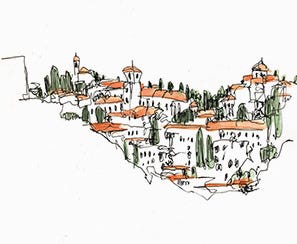
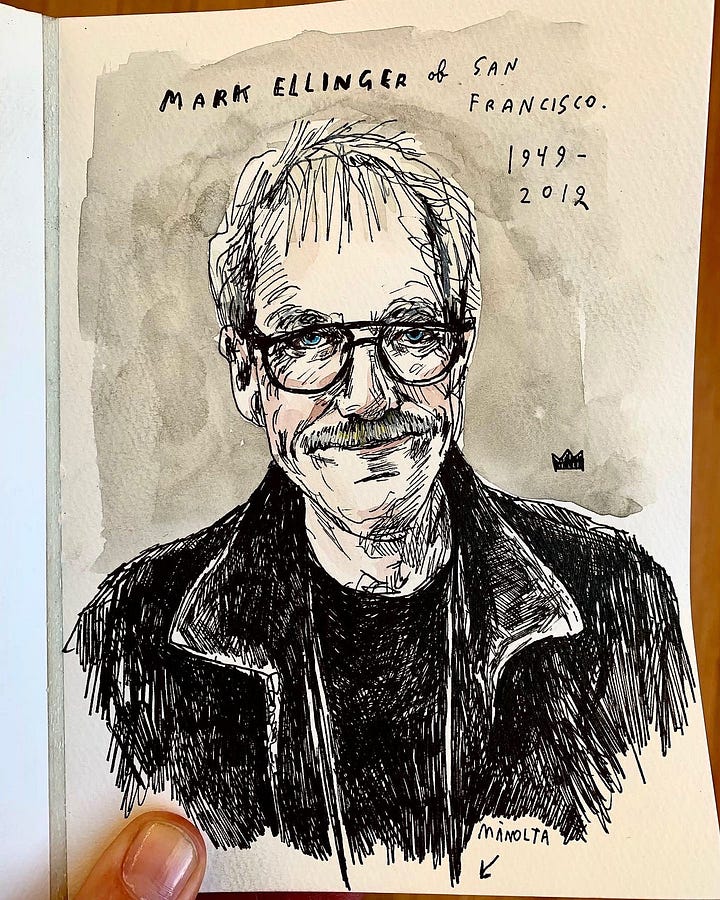
Finally, Ben Shahn’s use of text has been a huge influence on me. Seeing how Shahn incorporates text, the different kinds of lettering he uses, and how he employs it to effect social change - making prints and selling them as fundraisers, collaborating with writers, creating books and posters that can be widely distributed at a low cost… the text and ethics of his work were (and continue to be) an example of how an artist can be as I was figuring out my way forward as an artist.
Here’s a great example:
And for the record, here’s one of mine. It’s different, but you can see the influence.
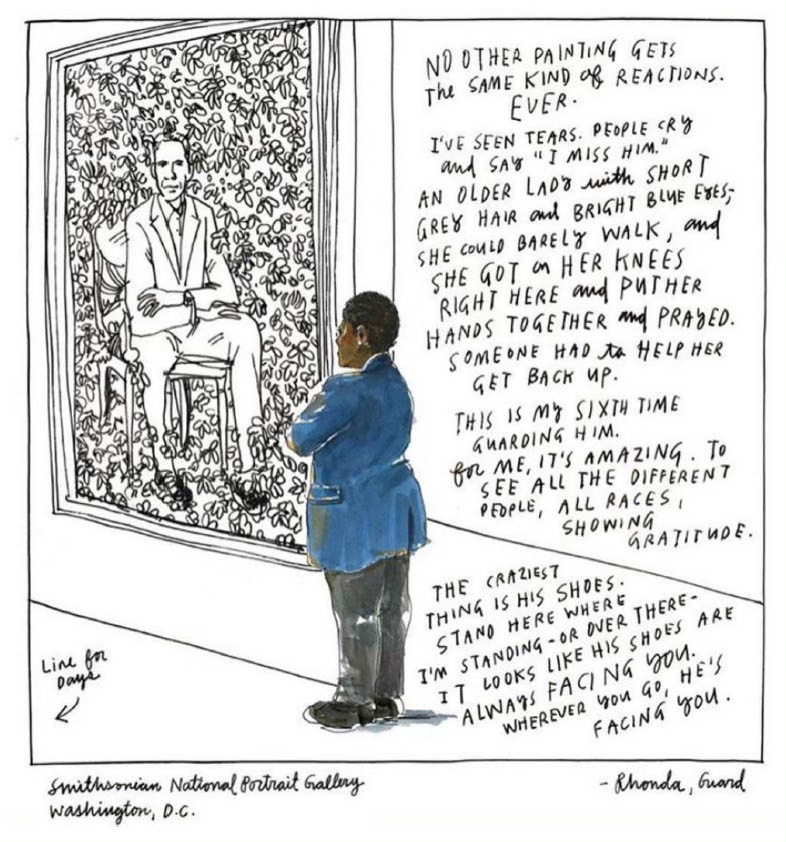
So there you go.
As we start off down our own artistic paths and discover our own voices, we take our first step by looking at what others have done, and figuring out what does (and does not) inspire us. It’s important that we take the time to look closely at art we are attracted to and be clear about what it is we love about it (and what we don’t.) That is the only way we can make conscious choices about how we do (or do not!) let it influence our work in the future.
Okay, now it’s your turn. Now I want to learn about what influences you.
Assignment
Let’s share our artistic influences with each other.



